Our Lady of the Sacred Heart, Jules Bicentenary, FDNSC Sisters 150 Years
The Chevalier Family has sent out this April reminder of these 2024 events.
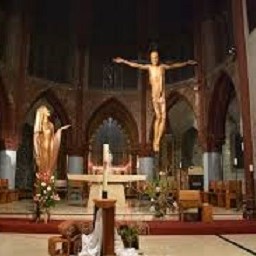
Jules Chevalier names Our Lady of the Sacred Heart.
His life:
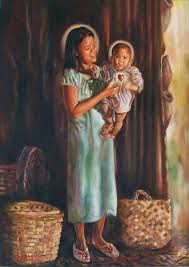
In Issoudun, one afternoon in 1859, in the shade of some lime trees, where Rules Chevalier and some companions were sheltering from the spring heat, he asked them this question: "Under what title shall we place the chapel of the Virgin in our church?" Rules was obsessed with the idea. There were several proposals for a new name, but Rules was clear: "We will have Our Lady of the Sacred Heart". He turned to her for help in founding the congregation and, grateful for the favours granted, promised to give her a special place. Two years later, in 1861, faithful to his promise, he also had the stained glass window of the church made, in which the first image of Our Lady of the Sacred Heart would appear.
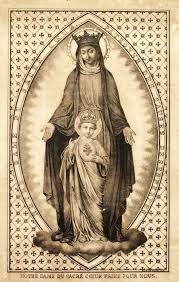
Due to the success of the publication of an article by Fr Chevalier in the Messenger of the Heart of Jesus and the campaign for images for the construction of the church, devotion to Our Lady of the Sacred Heart spread quickly. In 1864, the Association was founded.
His words:
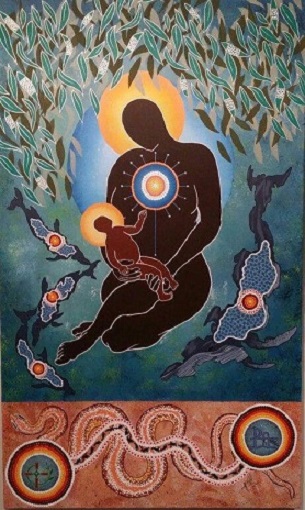
Artist, Richard Campbell
This is how he described to the artist what it should look like: "...it will represent the Immaculate Virgin, of normal size, with her hands and eyes turned downwards, towards the Child Jesus who will be in front of her. On his breast the child will have his little heart surrounded by rays, which he will show to the faithful with his finger". (Our Lady of the Sacred Heart, Jan G. Bovenmars, msc, p. 15).
Our Lady of the Sacred Heart: "This word means that Mary, as a consequence of her divine motherhood, possesses great power over the Heart of Jesus, and it is through her that we must go to this divine Heart". (Our Lady of the Sacred Heart, Jan G. Bovenmars, msc. p. 29).
"Let us often say to her: Our Lady of the Sacred Heart, pray for us" (MI 718).
The love for Our Lady of the Sacred Heart has reached our days with the same enthusiasm with which Jules Chevalier made her the protagonist of the congregation. It has spread to all continents and is still very topical, not least because John Paul II, in his encyclical letter Redemptoris Mater (RM, March 1987), makes several comments about her.
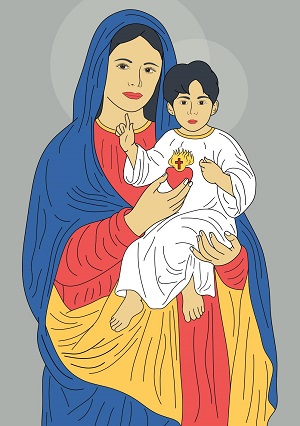
And when Chevalier further adds that Mary is "the hope of the hopeless", John Paul II echoes him by saying that She "remains for all a sure sign of hope" (RM 11).